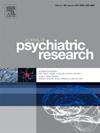中国产后妇女分娩心理创伤影响因素分析:基于ABC-X模型的多中心横断面研究
IF 3.7
2区 医学
Q1 PSYCHIATRY
引用次数: 0
摘要
背景中国产后妇女心理分娩创伤(PBT)的影响因素知之甚少。方法采用方便抽样法,于2023年4月至6月对2230名产后1年内的产妇进行多中心横断面调查。测量工具的选择基于经典的ABC-X模型。PBT (factor X)采用心理分娩创伤评估量表进行评估。从生育事件(因素A)、女性应对资源(因素B)和对生育事件的认知(因素C)三个方面收集预测因子数据,通过单因素分析、相关分析和多因素线性回归分析确定PBT的影响因素。结果多元线性回归分析结果显示,引产发生时间(β′= 0.086,P <;措施),早产(β= 0.049,P =措施),帮助阴道分娩(β= 0.031,P = .039),神经质(β= 0.229,P & lt;.001),对出生事件的负面认知(β' = 0.375, P <;.001)是中国产后妇女患PBT的危险因素。感知社会支持(β' = -0.175, P <;.001)和护理支持(β' = -0.117, P <;.001)是保护因素。这些因素占PBT已解释差异的52.5%。结论基于ABC-X模型可识别PBT的影响因素。这些努力似乎提供了信息,以确定高危妇女的PBT和制定干预措施,旨在预防或减少PBT及其相关的不良后果。需要更多精心设计的研究来验证我们的发现并加深对这一主题的理解。本文章由计算机程序翻译,如有差异,请以英文原文为准。
Analysis of influencing factors of psychological birth trauma among postpartum women in China: A multicenter cross-sectional study based on the ABC-X model
Background
Little is known about the influencing factors of psychological birth trauma (PBT) among postpartum women in China.
Methods
A multicenter cross-sectional survey was conducted from April to June 2023 among 2230 women within one year postpartum by convenience sampling. The measurement tools were selected based on the classical ABC-X model. PBT (factor X) was assessed using the Psychological Birth Trauma Assessment Scale. Data on predictors were collected from three aspects, including birth events (factor A), women's coping resources (factor B), and perception of birth events (factor C). Univariate analysis, correlation analysis, and multivariate linear regression analysis were performed to identify the influencing factors of PBT.
Results
Multivariate linear regression analysis results showed that induced labor onset (β' = 0.086, P < .001), preterm birth (β' = 0.049, P = .001), instrumental vaginal delivery (β' = 0.031, P = .039), neuroticism (β' = 0.229, P < .001), and negative cognitions of birth events (β' = 0.375, P < .001) were risk factors for PBT among postpartum women in China. Perceived social support (β' = -0.175, P < .001) and nursing support (β' = -0.117, P < .001) were protective factors. These factors accounted for 52.5 % of explained variances in PBT.
Conclusions
Multifaceted influencing factors of PBT were identified based on the ABC-X model. Such efforts seem to provide information for identifying women at high risk of PBT and formulating interventions aimed at preventing or reducing PBT and its associated adverse consequences. Additional well-designed studies are required to validate our findings and deepen the understanding of this topic.
求助全文
通过发布文献求助,成功后即可免费获取论文全文。
去求助
来源期刊

Journal of psychiatric research
医学-精神病学
CiteScore
7.30
自引率
2.10%
发文量
622
审稿时长
130 days
期刊介绍:
Founded in 1961 to report on the latest work in psychiatry and cognate disciplines, the Journal of Psychiatric Research is dedicated to innovative and timely studies of four important areas of research:
(1) clinical studies of all disciplines relating to psychiatric illness, as well as normal human behaviour, including biochemical, physiological, genetic, environmental, social, psychological and epidemiological factors;
(2) basic studies pertaining to psychiatry in such fields as neuropsychopharmacology, neuroendocrinology, electrophysiology, genetics, experimental psychology and epidemiology;
(3) the growing application of clinical laboratory techniques in psychiatry, including imagery and spectroscopy of the brain, molecular biology and computer sciences;
 求助内容:
求助内容: 应助结果提醒方式:
应助结果提醒方式:


